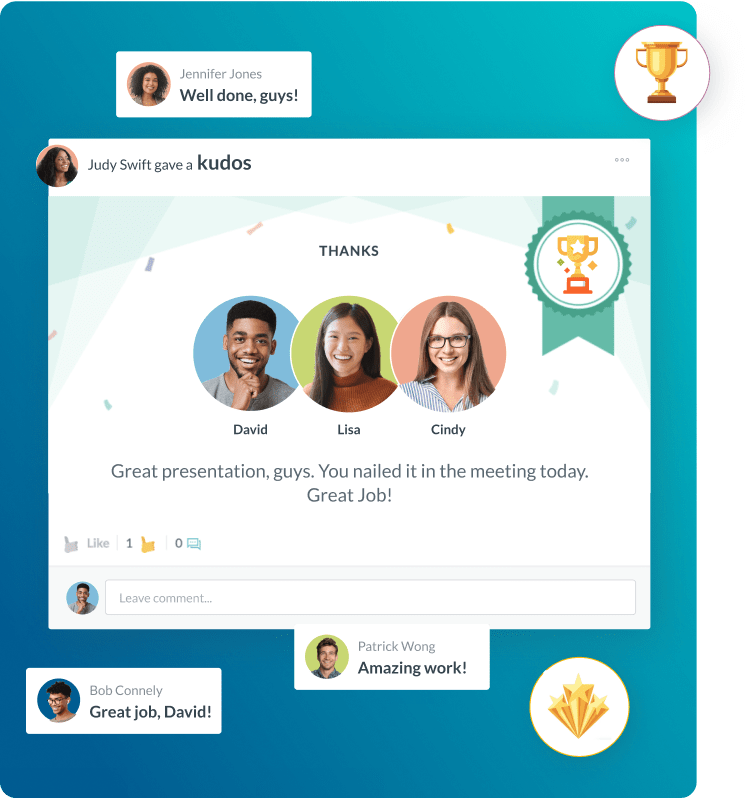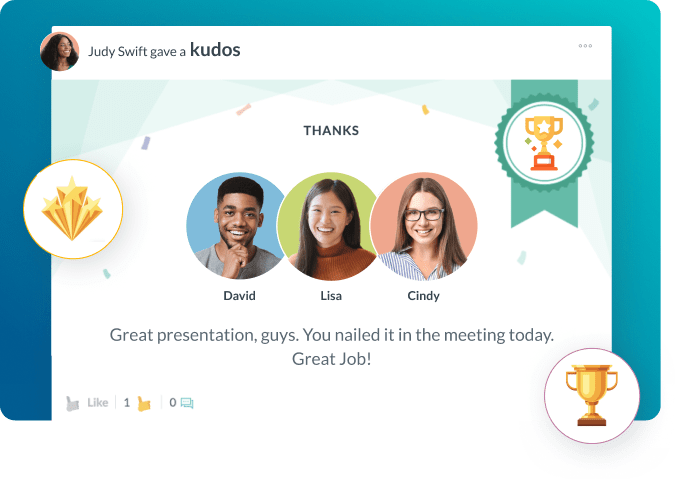HR Tech Stack
- Key Components of a High-Performing HR Tech Ecosystem
- Differentiating Your HR Technology Solutions
- Practical Best Practices for Optimizing Your HR Tech Stack
- Common Pitfalls to Avoid in HR Technology Implementation
- Industry Applications: HR Tech in the Real World
- A Phased Implementation Plan for New HR Technology
- Future Outlook and Trends in the HR Tech Stack
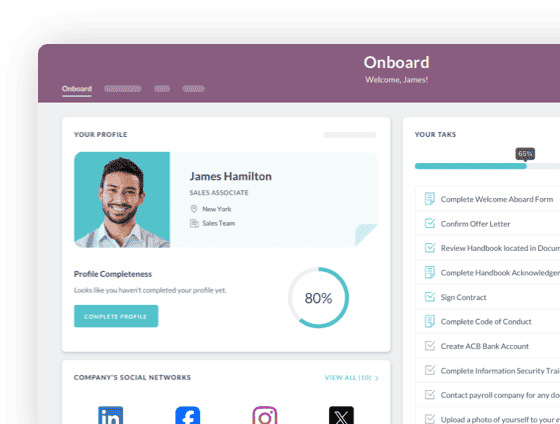
 Cut onboarding time
by 60%—here's the
Ultimate Checklist
that helped do it.
Cut onboarding time
by 60%—here's the
Ultimate Checklist
that helped do it.
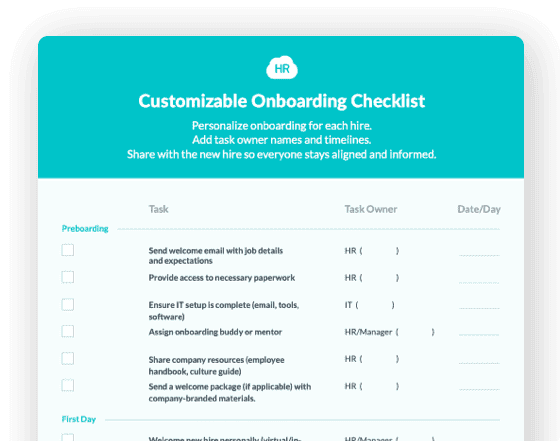
The HR Tech Stack is the core of modern people operations. It is the full set of digital tools a business uses. These tools manage, improve, and automate all human resources tasks. It is more than just one software program. It is a connected system that supports the whole employee journey. This journey goes from initial recruiting to offboarding. Business leaders must understand and build this stack carefully. Why? Because it directly affects efficiency, employee experience, data reliability, and the company's profit. A good HR technology system moves the HR team away from repetitive, manual work. This lets them focus on important plans, such as talent development and building company culture.
A great HR Tech Stack is no longer a luxury. It is a must-have to stay competitive in today’s job market. It helps companies manage tough tasks quickly and correctly. These tasks include global payroll, compliance, and large hiring projects. Choosing the right tools means you need a clear plan for your company's future workforce. You also need to know the difference between an HRIS, HRMS, and HCM suite. These terms show different levels of system power and how they fit together. Simply put, the right technology makes HR a true strategic partner to the business.
Key Components of a High-Performing HR Tech Ecosystem
A successful HR technology system has several key components that work together. These parts make the employee's whole journey smoother. We often split these systems into two groups: core administrative tasks and talent management tools. The systems a company chooses depend a lot on its size, its industry, and its long-term goals.
The main points for building a robust HR Tech Stack are:
Integration is Key:
All individual tools must share data easily. A system that moves employee data from recruiting into payroll without manual entry saves time and cuts down on errors.
Focus on the Employee Experience:
The best systems are user-friendly. Employees and managers can quickly handle tasks like asking for time off or seeing their pay stubs.
Scalability for Growth:
The chosen technology must grow with the company. It needs to handle more employees and adapt to new rules or locations.
Data-Driven Decisions:
The stack must give clear, reliable data. You can use this data to make smart choices about pay, keeping employees, and planning the workforce.
Security and Compliance:
The core technology must protect data. It must also follow all local, state, and federal labor laws. This is a must-have.
Mobile Accessibility:
Workers today need to do key HR tasks from any device. This makes a mobile-friendly design a vital feature.
A central piece of this system is the Core HR Software. It acts as the official place for all employee data. This system manages key functions like employee profiles, org charts, and benefits sign-up. If you do not have a strong core system, all other tech layers will have trouble working well.
Differentiating Your HR Technology Solutions
The name "HR Tech Stack" covers many different tools. These tools can sometimes do the same things. Leaders must clearly know the job of each layer. This prevents buying the same thing twice and makes sure all HR needs are covered. The table below shows the key groups in the stack. It lists their main jobs and how they are different.
|
HR Tech Category |
Primary Business Function |
Key Modules or Features |
Strategic Value |
|
Core HRIS/HRMS |
Employee data management, administration |
Employee records, benefits, time and attendance, compliance, internal reporting. |
Single source of truth for all employee data, ensures regulatory compliance. |
|
Talent Acquisition (ATS) |
Finding, tracking, and hiring new employees |
Job postings, candidate screening, interview scheduling, offer letters. |
Reduces time-to-hire, improves candidate experience, ensures fair hiring practices. |
|
Talent Management |
Developing and retaining the current workforce |
Performance reviews, learning management (LMS), career pathing, succession planning. |
Drives employee engagement, increases internal mobility, develops leadership pipeline. |
|
Compensation & Payroll |
Accurate and timely employee pay and tax filing |
Automated payroll processing, tax calculation, benefits deductions, year-end forms. |
Eliminates manual errors, ensures compliance with wage laws, boosts employee trust. |
This helps business leaders choose tools that fill gaps in how they work now. For example, a small business focused on fast growth will prioritize effective recruiting and Applicant Tracking Systems (ATS) to manage a surge in hiring volume. The right system is crucial for managing the entire lifecycle efficiently. This includes finding the best talent through tools focused on recruiting and applicant tracking.
Practical Best Practices for Optimizing Your HR Tech Stack
After you set up the basic parts, you must make sure the technology gives the most value to the company. These best practices are steps you can take to improve how you select, set up, and use your chosen technologies.
Do a Deep Needs Assessment:
Before you buy any new software, check all your current business processes fully. Find the specific bottlenecks, manual workarounds, and pain points for HR staff and employees. Do not buy a tool just because it is popular; buy it because it solves a defined problem. This detailed review should help you pick the most suitable performance management software to drive internal growth.
Prioritize Vendor Integration and Ecosystem:
Choose platforms that are made to work with each other. They should not need complicated custom coding. Look for open APIs or existing partnerships between vendors. The goal is to build one unified system, not a collection of disconnected apps. According to a recent analysis by Forbes, system integration is often the most significant barrier to successful HR tech implementation.
Invest in Change Management and Training:
Even the best technology will fail if employees and managers do not know how to use it. Create full, job-specific training programs. Tell people why the new system will make their jobs easier, not just how to use it. Assigning internal champions to promote adoption can greatly improve the return on investment.
Embrace a Mobile-First Philosophy:
For many modern workers, a smartphone is their main work tool. Ensure that critical functions work well and feel intuitive on a mobile device. These functions include time entry, expense reporting, and accessing benefits information. This focus dramatically improves the overall employee experience and engagement with the HR systems.
Common Pitfalls to Avoid in HR Technology Implementation
An integrated HR Tech Stack offers huge potential benefits. But many organizations stumble during the planning and setup phases. Avoiding these common mistakes can save significant time, money, and frustration.
The "Shiny Object" Syndrome:
Do not buy expensive, feature-rich software without a clear plan. Many companies only need a fraction of the full system capabilities. Focus on functionality that solves core business problems, not on the vendor’s full catalog of offerings.
Ignoring Data Quality and Migration:
Do not assume that moving data from the old system to a new one will be easy. Poor data quality in the legacy system—such as inaccurate job titles or missing dates—will cause major issues in the new system’s reporting and payroll. Data cleansing must be a critical step in the plan, especially when moving sensitive information to the new HR payroll software.
Failing to Include Stakeholders:
Do not set up a new system without early input from end-users. These users include managers, finance, and IT. This mistake creates resistance and low adoption. A new system impacts everyone, so their feedback on the user interface and critical workflows is very valuable during the selection process. This is particularly important for systems that manage employee data and workflows globally.
Underestimating the Total Cost of Ownership (TCO):
Do not focus only on the subscription license fees. You must also include other high costs. These include integration services, customization, ongoing maintenance, and the internal staff time needed for administration and training. The true cost of the technology often extends well beyond the initial contract. A rigorous financial review is necessary to accurately forecast the technology investment.
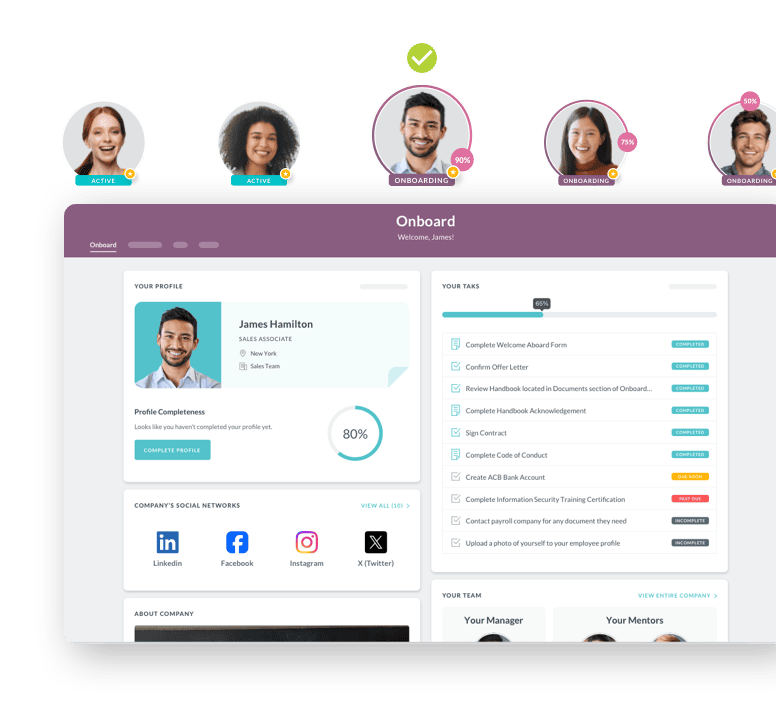
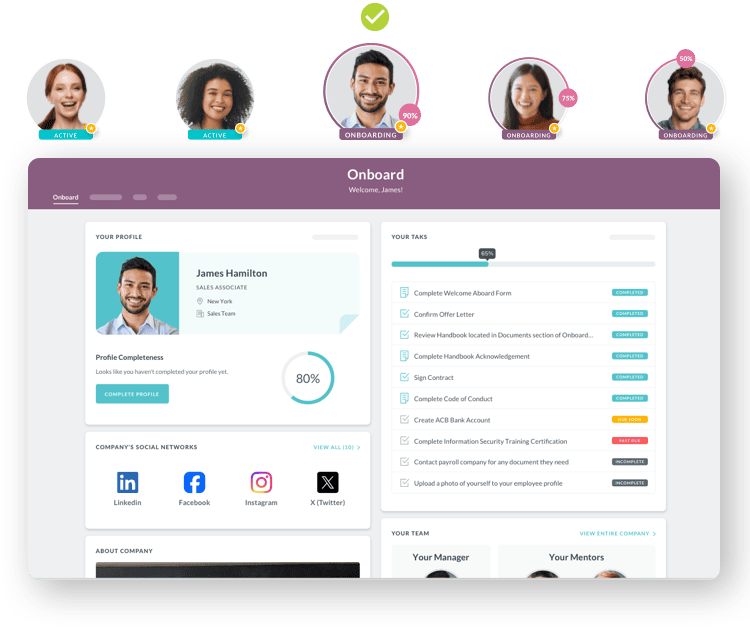
Industry Applications: HR Tech in the Real World
The strategic use of an integrated HR Tech Stack looks different across various industries. This is driven by their unique operational needs, compliance rules, and workforce demographics. The best HR software for a small business in the tech sector, for example, will have different priorities than a large manufacturer.
1. Global Manufacturing and Logistics:
This industry often has a large, dispersed, and hourly workforce. The HR Tech Stack here must prioritize sophisticated Time and Attendance modules and robust HR Payroll Software. This software handles shift pay differences, complex union rules, and compliance across multiple jurisdictions. The primary use of the stack is ensuring accurate labor costing for products and guaranteeing compliance with strict labor laws. Technology simplifies managing the payroll for thousands of employees across many state lines and country borders, linking time worked directly to the financial system.
2. Fast-Growing Technology Startups:
These companies value speed, flexibility, and the ability to attract highly skilled talent quickly. Their HR Tech Stack focuses heavily on a powerful Applicant Tracking System (ATS) and streamlined Onboarding Software to provide an excellent candidate experience. They often leverage integrated learning management systems (LMS) for rapid upskilling and a focus on flexible benefits enrollment. For these firms, the technology is crucial for scaling the workforce quickly while maintaining a cohesive, strong company culture. According to data published by SHRM, high-growth companies rely on advanced technology to automate up to 80% of routine administrative tasks, freeing up HR staff for strategic work.
3. Healthcare and Non-Profit Organizations:
These sectors deal with specialized, highly certified roles, high turnover, and complex scheduling. Their technology stack must be good at Credential Tracking, managing continuous professional education (CME), and handling intricate shift scheduling for 24/7 operations. Their systems also place a high priority on compliance with HIPAA and other privacy regulations. The HR technology in this environment supports life-critical operations by ensuring every staff member is properly certified and scheduled.
A Phased Implementation Plan for New HR Technology
A successful transition to a new HR Tech Stack is a project management task. It requires careful planning and phased execution. Rushing the process is the most common reason for failure. Following a structured guide, such as an HR software implementation guide, ensures all critical steps are addressed systematically.
Phase 1: Planning and Selection
Define Business Requirements: Document the "must-have" and "nice-to-have" features based on your needs assessment.
Assemble the Project Team: Include representatives from HR, IT, Finance, and key user groups (managers).
Vendor Evaluation: Review demos, check references, and ask vendors to showcase how their platform integrates with your existing critical systems.
Finalize Contract: Negotiate service-level agreements (SLAs) and support terms, not just the pricing.
Phase 2: Configuration and Data Preparation
System Configuration: The vendor and your team configure the system to match your specific workflows, naming conventions, and policy rules.
Data Cleansing: Cleanse, normalize, and map all employee data from the legacy system to the new system's required format.
Interface Development: Set up and test all necessary integrations, especially with payroll and financial systems.
User Acceptance Testing (UAT): Have key users test every critical function, like time-off requests and submitting a performance review, in a safe, non-live environment.
Phase 3: Launch and Stabilization
Training: Conduct mandatory, role-specific training sessions for all employees and managers.
Go-Live: Launch the new system. Start with a core group or a single, low-risk department before a full rollout.
Hyper-Care Support: Provide intensive, immediate support (known as hyper-care) for the first 4–6 weeks post-launch. This helps address bugs and user questions quickly.
Post-Launch Review: Conduct a formal review after 90 days. Evaluate adoption, measure key performance indicators (KPIs), and plan for any necessary optimizations or phase-two functionality rollouts.
Future Outlook and Trends in the HR Tech Stack
The landscape of the HR Tech Stack is constantly evolving. This is driven by advances in artificial intelligence (AI), machine learning, and shifts in global work models. Decision-makers must position their technology infrastructure to adapt to these changes. The systems you invest in today should have the foundational capacity to integrate the tools of tomorrow.
The most significant trends shaping the future include:
Pervasive AI and Automation:
AI will move beyond basic chatbots to become embedded in core workflows. It will automatically identify high-retention risk employees, suggest personalized learning content, and draft job descriptions. This dramatically improves HR's strategic value, shifting the focus from administration to prediction.
Focus on Employee Well-Being and Mental Health:
Future HR stacks will deeply integrate tools that measure and support employee well-being, stress levels, and work-life balance. Data from these tools will be used by managers to proactively address potential burnout. This is a key concern across all industries, according to research by Gallup.
Seamless Total Workforce Management:
The distinction between full-time employees, contractors, and contingent workers will blur. Future technology will manage the entire 'total workforce' on a single platform. It will handle different payroll, compliance, and performance metrics simultaneously.
Hyper-Personalization and Feedback:
Systems will deliver a highly personalized employee experience. They will offer bespoke benefits packages, career pathing based on individual skills, and constant, real-time feedback mechanisms rather than just annual reviews.
To prepare, business leaders should prioritize technologies that offer modularity, open APIs, and a clear roadmap for AI integration. By choosing a flexible, integrated HR Tech Stack, organizations ensure they are prepared not just for today's needs but for the strategic challenges of the future workforce.
Keep Reading
The Hidden Metrics of Frontline Success: Beyond Engagement Scores
"What gets measured gets managed, but what gets measured well gets transformed." — Peter
Embracing Diversity: Recognizing Different Cultures in the Workplace
Workplaces today reflect the incredible diversity of the world around us. People bring
From Manual to Automated: A Complete Guide to Digitizing Employee Onboarding for Large Organizations
Sarah Chen, Director of HR at a 7,000-employee healthcare organization, starts her Monday
Ready to streamline your onboarding process?
Book a demo today and see how HR Cloud can help you create an exceptional experience for your new employees.






